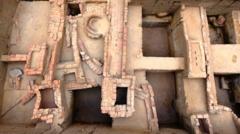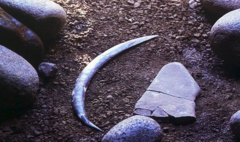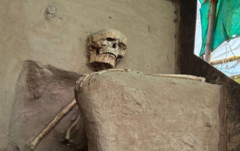Despite his significant contributions to archaeology, Rakhaldas Banerjee's legacy has faded into obscurity, overshadowed by controversies during his career and the attribution of his discoveries to others.
Unearthing the Legacy of Rakhaldas Banerjee: The Forgotten Explorer of Mohenjo-daro

Unearthing the Legacy of Rakhaldas Banerjee: The Forgotten Explorer of Mohenjo-daro
Discover the remarkable yet overlooked life of Rakhaldas Banerjee, the Indian archaeologist who revealed one of history's greatest civilizations.
In the realm of archaeology, certain figures stand out for their monumental discoveries, yet some remain hidden in the shadows of history. One such figure is Rakhaldas Banerjee, an Indian explorer and archaeologist whose groundbreaking revelations have, alarmingly, become less acknowledged over time.
In the early 20th century, Banerjee was instrumental in uncovering Mohenjo-daro, a site that was once the heart of the Indus Valley Civilization, located in what is now Pakistan. This ancient city, known by its translation "mound of the dead men" in Sindhi, was a critical center of a sophisticated civilization that thrived during the Bronze Age across a territory from north-east Afghanistan to north-west India.
Banerjee’s journey began in 1885 in Bengal, where a fascination with the medieval monuments of his hometown ignited a lifelong passion for history. He joined the Archaeological Survey of India (ASI) during the British colonial era, rapidly ascending the ranks. His tenure saw months spent scavenging for antiquities, inscriptions, and ancient ruins across the subcontinent, culminating in his discovery of Mohenjo-daro in 1919. His excavations unearthed invaluable findings, from seals and coins to evidence of urban development that began an astounding 5,300 years ago.
However, his independent mindset and nonconformity often led Banerjee into disputes with superiors and fellow archaeologists. Reports indicate that there were significant tensions surrounding the recognition of his discoveries. Notably, Banerjee’s findings were never published under his name by the ASI. Allegations arose later that John Marshall, then head of the ASI, took undue credit for Banerjee’s work.
In her examination of Banerjee's life, historian Nayanjot Lahiri highlights his frequent clashes with authority and instances where he bypassed protocol, such as trying to acquire artifacts without permission. These disputes, she noted, contributed to not only his troubled legacy but also the potential for much of his work to be forgotten.
As his funding dwindled and tensions mounted, Banerjee was transferred, with a request for relocation stemming in part from accusations of misuse of ASI funds. After his contentious departure from the organization in 1927, he sought a new path as a university professor but faced personal difficulties as well due to an extravagant lifestyle that overshadowed his already fading reputation.
His legacy, marred by contradictions and controversies, speaks volumes about the complexities surrounding historical recognition and the acknowledgment of contributions in the field of archaeology. Rakhaldas Banerjee, a pivotal figure in revealing the Indus Valley’s splendor, remains an enigma—a brilliant archaeologist whose many talents and foibles might have conspired to leave him as a mere footnote in history.
Ultimately, the case of Rakhaldas Banerjee reminds us that the stories of great explorers can often be as complex as the histories they unveil, leaving us to reconsider who truly shapes our understanding of the past.




















